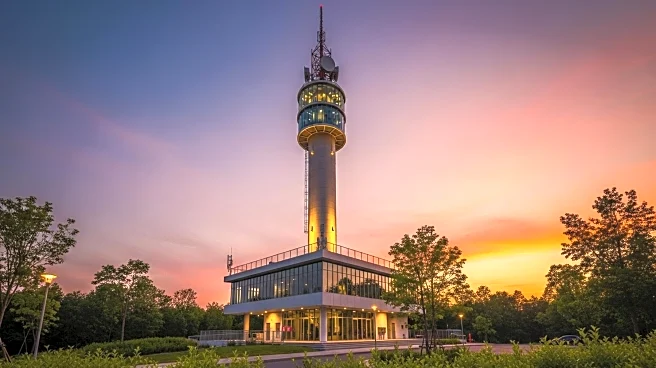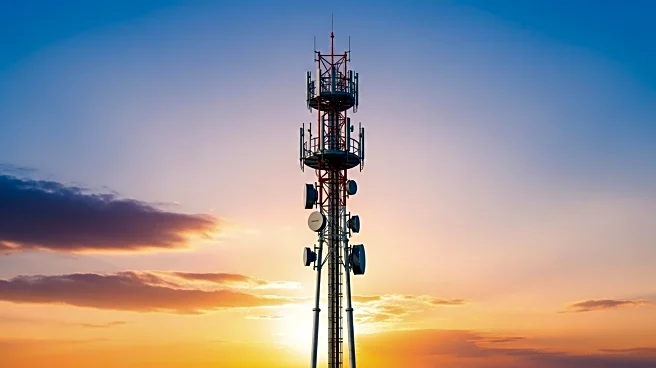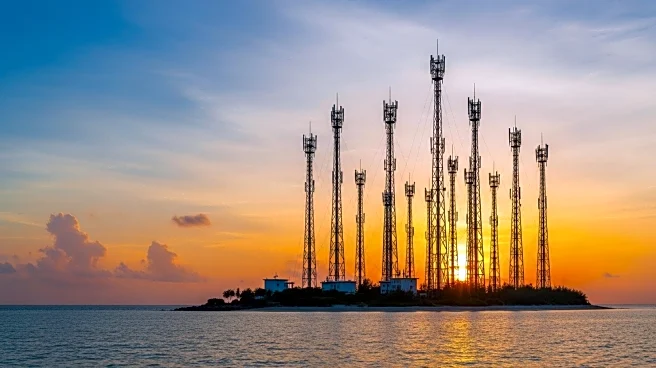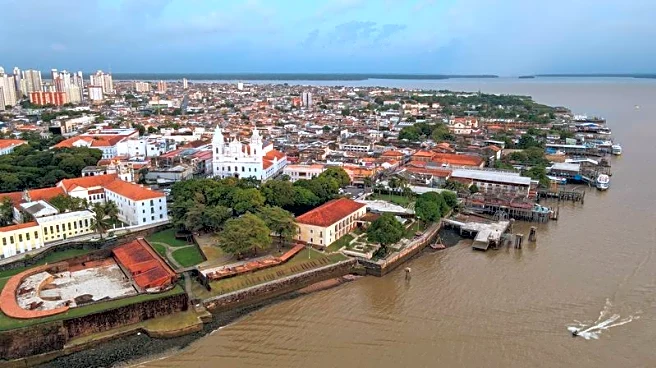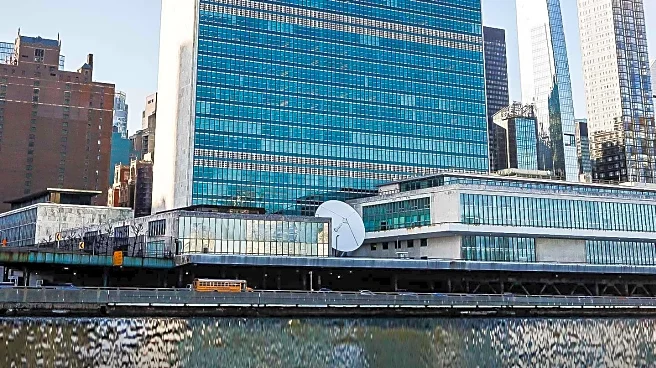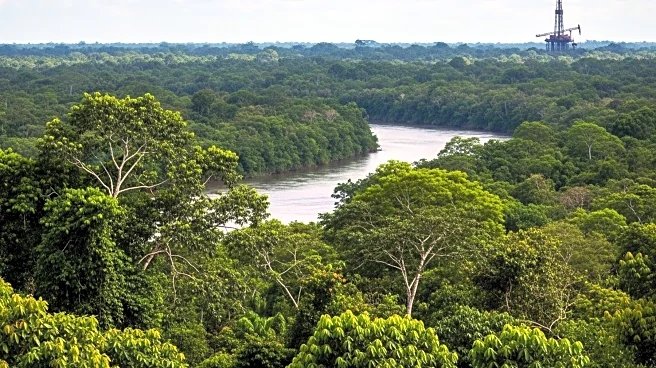What's Happening?
IHS Brazil, in collaboration with Brazil's leading mobile operators Claro, Vivo, and TIM, has installed a 60-meter shared tower on Ilha do Combu. This initiative aims to provide 4G and 5G coverage to the island, which is located near Belém and is home to approximately 600 families. The project addresses the island's connectivity challenges due to its riverine environment and aims to support digital education, telemedicine, and financial services. The tower's design minimizes environmental impact and is expected to enhance Combu's appeal as a tourist destination, especially with the upcoming 30th United Nations Conference on Climate Change (COP 30) in Belém.
Why It's Important?
The installation of the shared tower is significant as it enhances digital connectivity in a previously underserved area, promoting social inclusion and economic development. The improved infrastructure supports public policies and reduces environmental impact through shared resources. This development is crucial for the local community, enabling access to essential services and boosting tourism. The project also sets a precedent for similar initiatives in other remote regions of the Amazon, potentially transforming connectivity and economic opportunities in these areas.
What's Next?
With the COP 30 conference approaching, the new tower is expected to accommodate the influx of over 40,000 visitors, including delegations and media. The success of this project may encourage further collaborations between mobile operators and infrastructure providers to expand connectivity in other remote regions. Stakeholders may monitor the project's impact on local tourism and community development, potentially replicating the model in similar environments.
Beyond the Headlines
The initiative highlights the importance of infrastructure sharing in reducing environmental impact and promoting sustainable development. It also underscores the role of digital connectivity in enhancing quality of life and economic prospects in remote communities. The project may influence future policies and investments in telecommunications infrastructure, particularly in ecologically sensitive areas.

